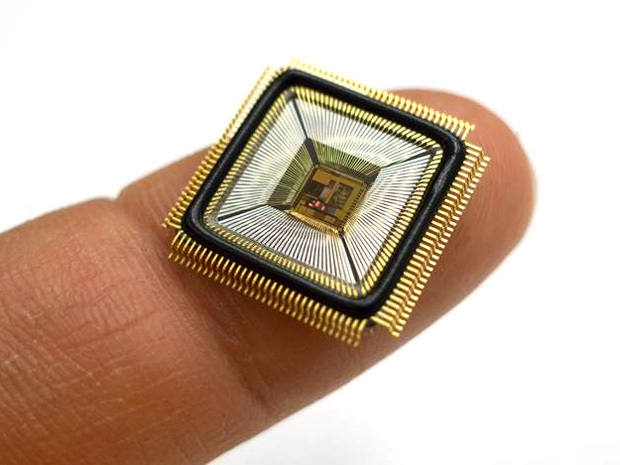Cochlear implants offer deaf people and others that are having hearing problems the ability to hear certain sound. The device may be implanted through surgery to stimulate the cochlear nerves. For some people, hair cells activate these cochlear nerves to give them the ability to hear. One of the typical drawbacks of the cochlear implant is the noticeable size of the transmitter, wire, and microphone. This can lead to discomfort during the user’s daily routine, and unfortunately users may also face a social stigma. A team of engineers and physicians may have a solution to those problems: a cochlear implant without external hardware.
A paper, written by Marcus Yip and Anantha Chandrakasan of the Massachusetts Institute of Technology, describes a signal-processing chip that uses small amounts of power and charges wirelessly. Yip’s team also includes Rui Jin and Nathan Ickes from MIT’s Department of Electrical Engineering and Computer Science. The chip itself was designed by engineers from MIT and physicians from the Harvard Medical School as well as the Massachusetts Eye and Ear Infirmary. Chandrakasan says that the chip may be charged wirelessly by using a smartphone with a charger, making it much more convenient.
The signal-processing chip would be a significant improvement over the current design in cochlear implants. The MIT team and Chandrakasan, in particular, have a great deal of experience with low-power chips. They have managed to cut the power consumption by more than a fifth, thanks to a new waveform. They fine-tuned the chip to the point where it can stimulate the auditory nerve with a more efficient use of power.
The improved signal-processing chip is not the only innovation in this new cochlear implant design. It would also eliminate the external microphone typically used in cochlear implants. Instead, the user’s own middle ear would have the low-power chip implanted in it, which could then transmit the signal that would otherwise be sent by the microphone. This innovation builds upon an existing medical procedure, the middle ear implant, which helps certain kinds of hearing loss.
The design proposed by the team led by Yip and Chandrakasan is not the first to put forth the idea of moving cochlear implants inside the human body. A team at the University of Utah led by Darrin Young has also used the middle ear in lieu of an external microphone. However, it requires an implanted battery that would use more power than the MIT design.
This improved design for cochlear implants could have a tremendous impact. It is a further step in the process of moving the implants into the human body. This could enable users to more comfortably integrate cochlear implants into their everyday lives. They would be able to take the implants into the shower and other water sources more easily. The improvement to the process of charging the implant would also have a positive impact. The users could charge the device overnight and not need to worry about its power during the day, and even during the day they could charge it quite easily through their smartphone.


So, if this thing is implanted into their inner ear, the user has to have a smartphone next to their head all night so that it can recharge? That probably is going to be worse than deafness if they will get brain tumours later on.
How long will it be tested for and how do we know the long-term effects of these developments?